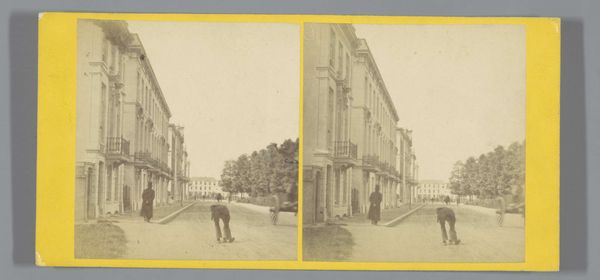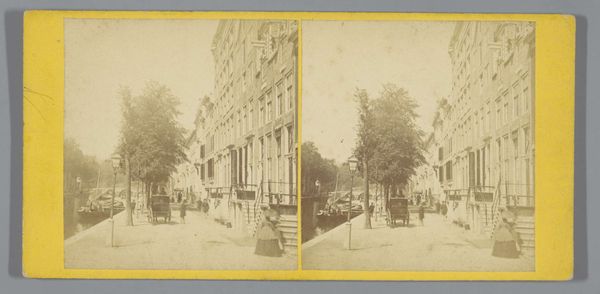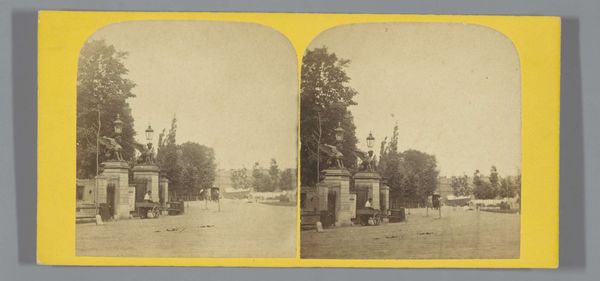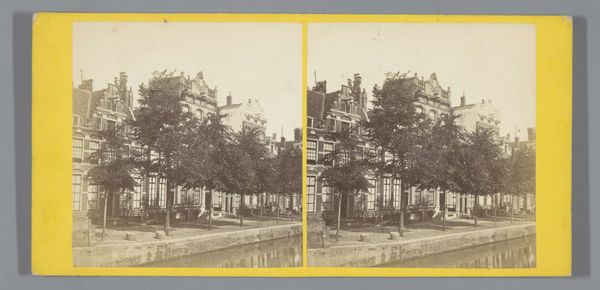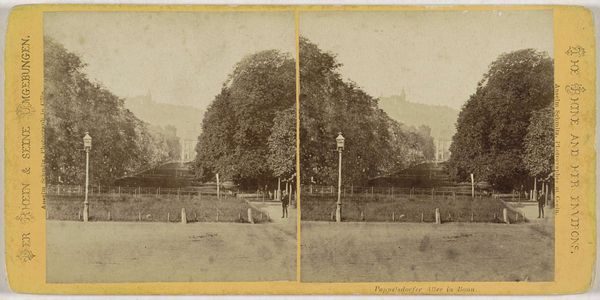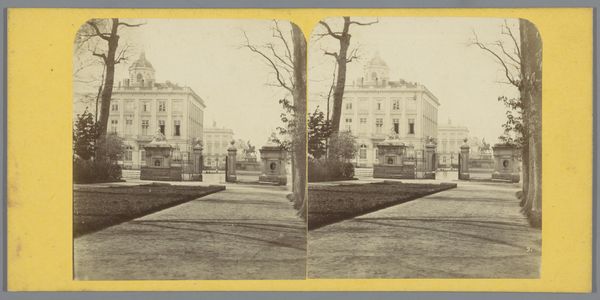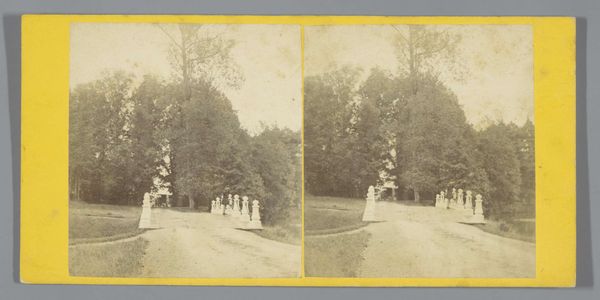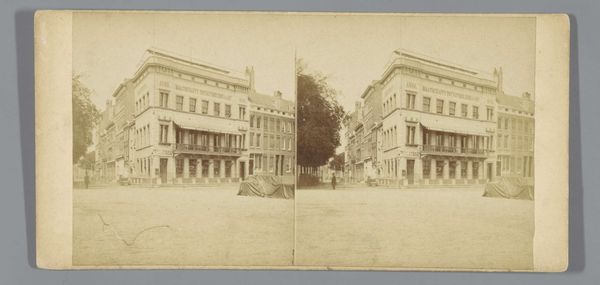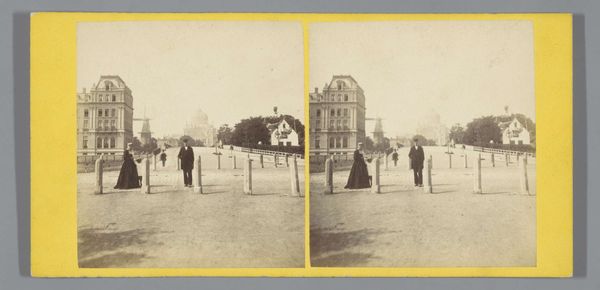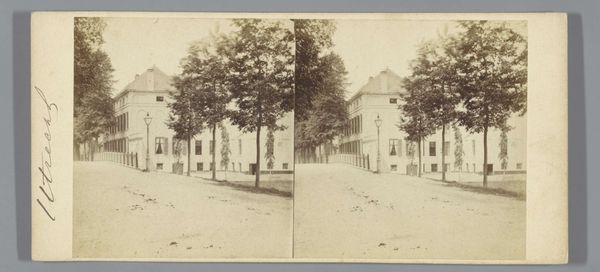
photography, gelatin-silver-print
#
landscape
#
photography
#
gelatin-silver-print
#
cityscape
#
street
Dimensions: height 83 mm, width 170 mm
Copyright: Rijks Museum: Open Domain
Pieter Oosterhuis made this photograph of the Kneuterdijk in The Hague using albumen silver print, a process developed in 1850. It involves coating paper with albumen, derived from egg whites, to create a glossy surface, before it is sensitized with silver nitrate. The process, while innovative, was labor-intensive. Preparing the albumen paper demanded meticulous work, reflecting the period's transition towards mass production while still relying on artisanal skill. Each print required careful handling and precise timing, embodying a tension between technological advancement and traditional craftsmanship. The photograph's sepia tones and soft focus evoke a sense of nostalgia, yet the sharp detail captured hints at photography's burgeoning role in documenting urban life. Oosterhuis' choice of this medium highlights photography's unique ability to democratize art, capturing everyday scenes and making them accessible to a wider audience. It is important to appreciate the work involved in such photographic images, and how this new medium of the time blurred the lines between artistic expression, technological innovation, and social observation.
Comments
No comments
Be the first to comment and join the conversation on the ultimate creative platform.
